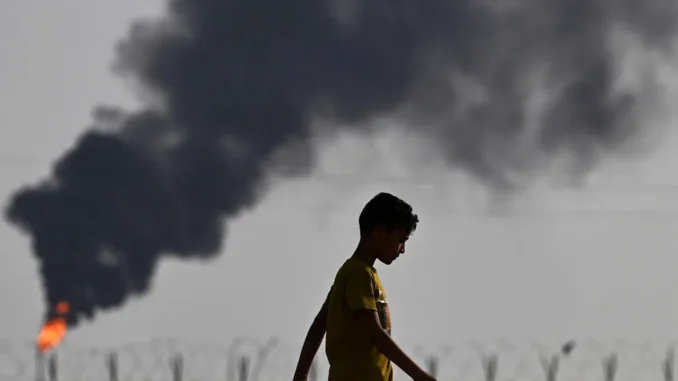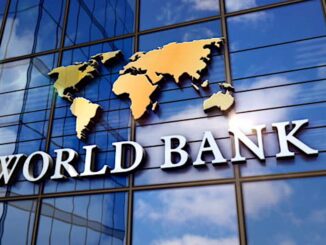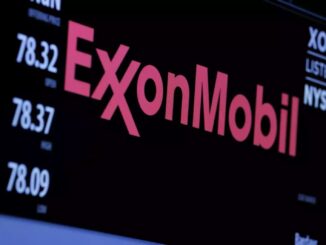
Capterio said it used satellite data to build a flaring, venting and leaking database to help verify information from governments and companies, with the US, Russia, Iran and Libya again cited as the main emitters.
A recent World Bank report noted a sudden 6.9% increase in upstream gas flaring to 148 billion cubic metres in 2023 compared to 138.5 Bcm in 2022, reversing a two-year reduction trend.
Capterio said the recent global increase is “very concerning”, with the rise being dramatically higher than the 1.2% increase in oil and condensate production.
Venting and leakage accounted for another 119 Bcm last year, which together with the flaring volumes meant 267 Bcm of hydrocarbon gases were released, according to the report.
“The total volume of gas flared, vented and leaked represents about 6.6% of all gas production in the world last year. It is about 1.7 times higher than the annual European imports of Russian pipeline gas before the country’s invasion in Ukraine in 2022,” Capterio chief executive Mark Davis told Upstream.
Capturing and using the lost gas presents a “revenue opportunity of up to $48 billion per year” at a conservative $5 per million British thermal units, and emissions reduction of between 2.6 billion and 6.8 billion tonnes of carbon dioxide equivalent, the report said.
However, Davis added that, while such a high level of waste may not look “great for the gas industry’s license to operate… this is a fantastic opportunity for industry players to capture and bring additional gas to the market, increase energy security and decarbonise the planet, delivering the net zero target”.
“Satellites permit researchers to convey each location of gas flaring, venting and leaking to operators to enable them to take necessary action,” Davis said, adding that the company’s high resolution, high frequency data, can help companies improve their visibility of flaring, drive operational accents and identify attractive investment opportunities.

Satellite data on gas waste “is also essential to determine supply chain emissions” for customers in Europe and elsewhere who want gas supplies produced with little or no emissions, he said.
Flaring and operational performance
Countries that reduced flaring in 2023 did so partly by improving operational performance, Capterio said.
The converse applied to those regions where flaring increased, led by Russia, Iran and Libya.
“Regardless of the underlying production changes, some of which are related to Opec+ commitments, operational practices and associated infrastructure are, therefore, key to delivering lower flaring,” the report said.
While Russia’s oil production dropped by 2% last year due to international sanctions, disrupted trade routes and Opec+ cuts, flaring increased by 11%, despite the country endorsing the World Bank’s Zero Routine Flaring initiative.
Capterio’s report attributed most of last year’s flaring increase to the Eastern Siberian basin and oilfields north of the city of Irkutsk, where fields increased oil exports to Asia via the East Siberia-Pacific Ocean pipeline.
Production of light and sweet oil at these fields has been ramped up to offset declining output at other Russian fields and to generate more export revenues. However, these assets also flared most of the additional associated gas in the process.
The report said there could be opportunities to recover the lost gas either for onsite power generation or for export through the Sila Sibiri 1 gas pipeline to China, which is operated by Russian state-controlled gas giant Gazprom.
The Russian fields where flaring fell are all located in the western Urals basin, where oil production was reduced because of Russia’s reduced access to traditional European and international markets following sanctions related to the invasion of Ukraine in early 2022.
In Iran, flaring increased by almost 19% due to to a 10% increase in production following diplomatic efforts and an easing of sanctions, according to Capterio.
Iran has seen “very slow progress” on the five proposed projects that are planned to bring additional associated gas capture capacity at the South Pars field, as well as acreage in Khuzestan, Kharg and Ahvaz provinces, the report said.
In Libya, flaring increased 8% last year, driven by a 16% jump in production and a higher flaring intensity per barrel of oil produced.
Some of the increase was attributed to a blockade orchestrated by General Khalifa Haftar on ports, pipelines and fields, driving Libya’s National Oil Company (NOC) to declare force majeure for exports, the report said.
Libya’s flaring also appeared to increase due to a concerted effort to boost output, although NOC chairman Farhat Bengdara has committed to reducing flaring in the national interest.
Countries with enduring policies enforced by credible and independent regulators — including Saudi Arabia, the United Arab Emirates and Norway — have done “particularly well on reducing the flaring intensity” of their oil and gas industries.
Conversely, political instability and lax processes or regulatory enforcement often have high flaring rates, the report said, citing Nigeria, which has a flaring penalty in place but collects only about one-fourth of the fees due, and Algeria, where a flaring penalty of some $48 per tonne appears not to be enforced by the country’s semi-independent regulator.
Capterio said that reducing flaring will inevitably require collaboration across multiple parties, including politicians, regulators, governments, operators, service companies, equipment manufacturers, consultants, funding bodies and consumers.
It is likely that dramatic reform of political systems to remove subsidies, and create incentives, build capacity and leadership may also be required, the report suggested.
Take the Survey at https://survey.energynewsbeat.com/






